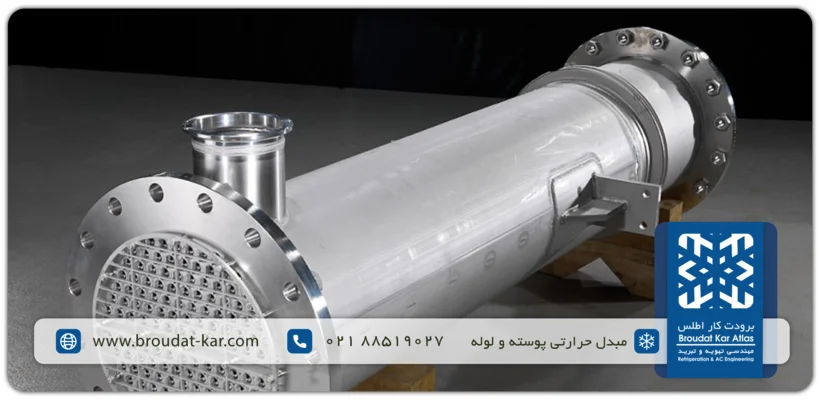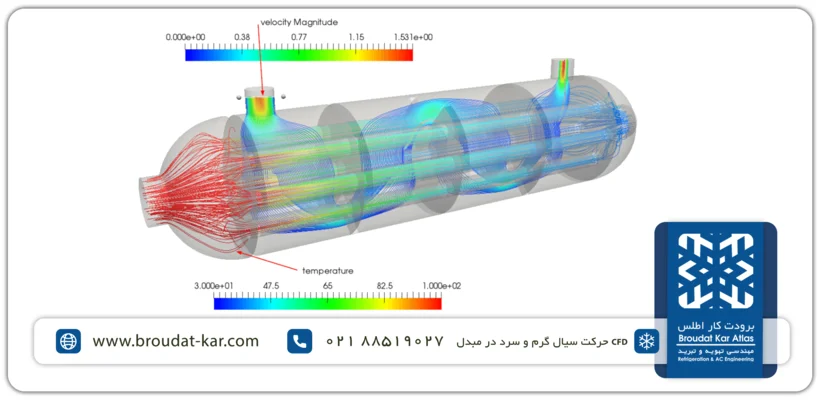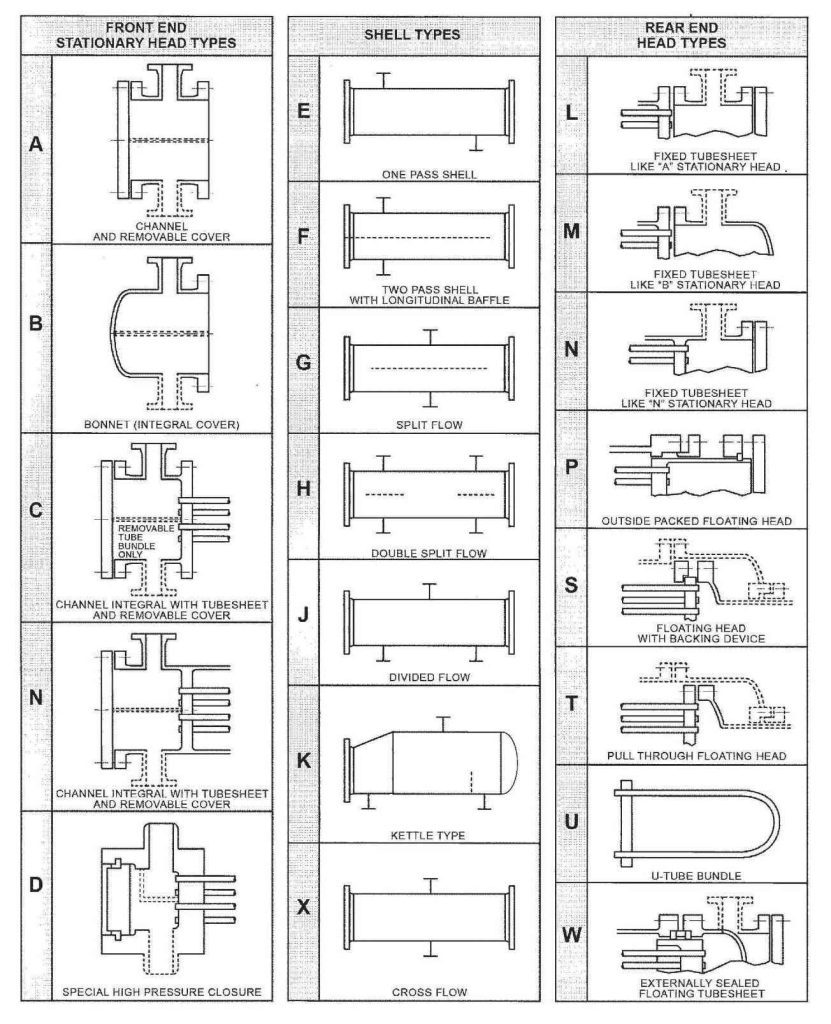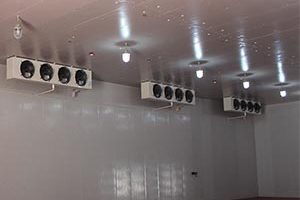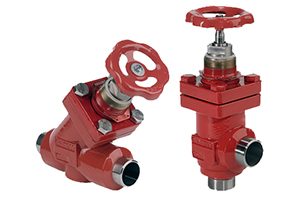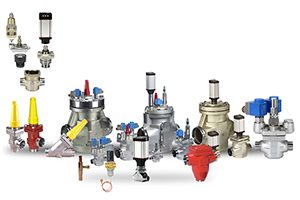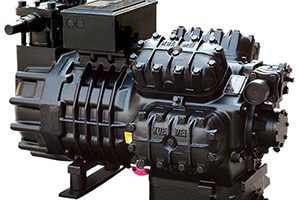Shell and Tube Heat Exchanger: An Overview
The shell and tube heat exchanger is one of the most effective tools for indirect heat transfer between fluids, commonly referred to as a tubular heat exchanger in industrial applications.The inception of the shell and tube heat exchanger, or shell and tube exchanger, dates back to 1970 when it was initially designed and constructed for application in nuclear industries by Charles E. Boardman and John H. Germer. This innovative heat exchange technology was specifically crafted for facilitating heat exchange with sodium, serving as a coolant for plutonium in liquid metal reactors.
A shell and tube heat exchanger is a type of heat exchanger that features a cylindrical shell containing multiple parallel tubes. Its primary function is to transfer heat between two fluids: one flows through the shell, while the other flows through the tubes. This indirect transfer of heat or cooling continues until the fluids reach the desired temperatures. Once the process is complete, the fluid within the tubes exits through an outlet, ready for the next stage of its cycle.
Specifications of Shell and Tube Heat Exchanger
Shell and tube heat exchangers stand out as one of the most popular types, renowned for their adaptability and flexibility. In these exchangers, two fluids with varying temperatures are involved—one entering the shell and the other passing through the tubes. Heat transfer occurs through the tube walls, facilitating the exchange of heat between the two fluids.
Shell and tube heat exchangers have widespread applications across various industries, including refrigeration, chemical, energy, power plants, petrochemical, nuclear, and many others. Consistent with their name, these heat exchangers comprise a shell (larger-sized tube) housing a bundle of smaller-sized tubes. The tubes in these exchangers can be constructed from a range of materials, including carbon steel, stainless steel 304, stainless steel 316, copper, nickel, and aluminum.
Advantages and Disadvantages of Shell and Tube Heat Exchangers
Shell and tube heat exchangers come with specific advantages and disadvantages, as outlined in the table below:
| Advantages | Disadvantages |
| High resistance to heat and high-pressure fluid flow | May require special insulation, adding to costs |
| Affordable pricing | Possibility of leakage in certain conditions |
| High heat transfer efficiency | Periodic descaling of tubes is necessary |
| Easy to repair in case of leakage |
Components of Shell and Tube Heat Exchanger
Shell and tube heat exchangers are structurally composed of various sections selected and designed based on their application and the type of fluid used. Here are the main components of this type of heat exchanger:
- Shell: The shell or casing of the exchanger, up to a size of 24 inches, is constructed from tubes, while sizes larger than 24 inches are made through sheet metal bending and welding. Economically, low-carbon steel tubes are the most suitable option for shell construction due to their ideal circular cross-section compared to rolled and welded sheet metal.
- Headers: The headers at both ends of the exchanger are chosen based on the exchanger’s application. Most headers have the ability to open to provide access to the tubes and can be connected to tube sheets through flanges or welding.
- Tubes: Tubes can be seamless or seamed and made from materials such as carbon steel, stainless steel, titanium, nickel-chromium, copper, aluminum, etc. Standard tube sizes are typically 2/1, 4/3, 1, and 2/1 inches. The thickness of tube walls is determined based on the fluid pressure and temperature inside and outside the tube, the thermal stress between the shell and tube, and the corrosive properties of the fluids inside the shell and tube.
- Tube Sheet: The tube sheet, made of sheet metal with holes for tube placement, is designed to secure the tubes with a triangular or square pattern. Tube sheet material is usually the same as the tubes. Tubes must be fully connected to the tube sheet and be leak-proof to prevent mixing of the fluids inside the tubes and shell.
- Baffles: Baffles serve three essential roles in shell and tube heat exchangers: providing support for the tubes during construction and operation, maintaining tube spacing in different bundle sections and preventing tube vibration, and guiding the fluid inside the shell according to the designed pattern. Part of the baffle is cut to allow fluid flow along the tubes, called baffle cut, and the distance between baffles is known as baffle spacing, determining fluid velocity, pressure drop, and heat transfer rate in the exchanger.

Types of Shell and Tube Heat Exchangers
Shell and tube heat exchangers are divided into three main sections, categorized as follows:
- Front Head End (Inlet): The section where one of the fluids enters the exchanger.
- Shell: The central section where heat exchange takes place. It includes the shell or casing.
- Rear Head End (Outlet): The section where one of the fluids exits the exchanger.
In the image below, various models of these three sections determine the type of shell and tube exchanger based on the TEMA (Tubular Exchanger Manufacturing Association) standard.
For example, a shell and tube heat exchanger type with a fixed tube sheet and shell, having a single pass, is classified as BEM. Other types include:
– Fixed Tube Sheet: BEM, AEL, NEN, BEL
– U-Type: BEU, AEU, CEU, BKU
– Float-Type: AES, BES, AEP, BEW
TEMA Classes of Shell and Tube Heat Exchangers
The Tubular Exchanger Manufacturers Association (TEMA) has established classes for shell and tube heat exchangers based on their application and design. Here are some TEMA classes:
- TEMA Class R (Refinery Class): This class is specifically designed for applications in the oil and gas industry. Heat exchangers classified under TEMA Class R are tailored to meet the specific demands of refinery processes.
- TEMA Class B (Chemical Class): Heat exchangers falling under TEMA Class B are engineered for handling chemical fluids. The design and materials used in these heat exchangers are chosen to withstand the challenges posed by various chemical processes.
3.TEMA Class C (General Class): TEMA Class C is intended for general-purpose applications, typically involving common fluids such as water. Heat exchangers in this class are versatile and suitable for a wide range of industries and applications where the requirements are not highly specialized.
These TEMA classes help in categorizing and selecting the appropriate type of shell and tube heat exchanger based on the specific needs and nature of the fluids involved in the heat exchange process.
Shell and Tube Heat Exchanger Standards
Designing and manufacturing shell and tube heat exchangers requires adherence to specific standards to ensure optimal quality and performance. One key standard is the TEMA (Tubular Exchanger Manufacturers Association) standard, established by the Shell and Tube Transducer Manufacturers Association in the U.S. TEMA outlines essential design guidelines and classifies heat exchangers into three categories: Class B for chemical processes, Class C for commercial applications, and Class R for large industrial uses and oil facilities.
In addition to TEMA, the ASME (American Society of Mechanical Engineers) standard is widely recognized. ASME focuses on pressure-related components, specifying suitable materials and non-destructive testing requirements. The catalog of a shell and tube heat exchanger often indicates compliance with these standards.
Design and Manufacturing of Shell and Tube Heat Exchangers
Drawing upon the expertise and technical knowledge of its specialized team, this company excels in the design and production of shell and tube heat exchangers. The process involves utilizing state-of-the-art software and adhering to industry standards such as TEMA (Tubular Exchanger Manufacturers Association), HEI (Heat Exchange Institute), API (American Petroleum Institute), and ASME (American Society of Mechanical Engineers).
The customer articulates their requirements, and the technical team undertakes the design process while providing detailed technical and pricing estimates. Upon the completion of executive drawings and calculation graphs, and with the client’s approval, the production team initiates the manufacturing process. This comprehensive approach ensures that the resulting shell and tube heat exchangers meet rigorous industry standards and fulfill the specific needs of the customers.
How Does a Shell and Tube Heat Exchanger Work?
A shell and tube heat exchanger operates by allowing two separate fluids to flow—one inside the tubes and the other in the surrounding shell space. The goal is for these fluids to exchange heat without mixing.
Typically, the hot fluid enters one side, transferring its heat through the metal walls of the tubes to the cold fluid circulating on the opposite side. The tube walls act as a barrier, preventing the fluids from mixing while facilitating efficient heat transfer across the surfaces. This process continues until both fluids reach their target temperatures.
How to Clean a Shell and Tube Heat Exchanger
Cleaning a shell and tube heat exchanger is essential for maintaining efficiency by removing deposits inside the tubes. This can be done through two main methods: mechanical and chemical.
- Mechanical Cleaning: This method involves manually opening the heat exchanger and cleaning the tubes and shell interiors. A brush or high-pressure water jet is used to scrub away deposits. Mechanical cleaning is effective for removing larger or more stubborn debris.
- Chemical Cleaning: In this method, specific chemicals are injected into the heat exchanger to dissolve deposits within the tubes and shell. This technique is effective for removing fine or mineral-based deposits that are difficult to reach with mechanical cleaning tools.
Each method has its advantages depending on the type and extent of buildup. Regular cleaning helps maintain the heat exchanger’s performance and longevity.
Price of Shell and Tube Heat Exchanger
The cost of a heat exchanger is influenced by several factors, including exchange capacity, the material of the tubes and shell, type, and class of the exchanger. To provide an accurate price estimate, it is crucial to specify the capacity and material.
Utilizing design software such as Aspen Bjac or HTRI, the specifications and sizing of the heat exchanger are determined. Once the number and material of the tubes and other components are identified, the exchanger can be priced accordingly. For a precise price quote, you are welcome to contact us. Our experts will efficiently design and estimate the cost based on your specific requirements.
Buy Shell and Tube Heat Exchangers from Atlas Refrigeration Co. Ltd.
For an effective purchase of a shell and tube heat exchanger, it’s crucial to consider factors such as the reputation of the manufacturer, adherence to quality standards, and testing protocols. Atlas Refrigeration Co. Ltd., with over 40 years of experience in mechanical equipment manufacturing, designs and produces various shell and tube heat exchangers, including condensers, evaporators, and liquid-liquid exchangers, ensuring high quality at competitive prices.
All Atlas products meet international standards and are designed under the supervision of the American Society of Engineers to ensure the best engineering practices. For purchasing or free expert consultation, contact our specialists through the website’s communication channels.
Conclusion
In conclusion, shell and tube heat exchangers are an excellent choice for heavy-duty and industrial applications due to their high resistance to pressure and temperature, adaptability to various operational conditions, and reliable efficiency. However, regular maintenance and cleaning are essential to prevent efficiency loss over time.
If you’re seeking to enhance the performance of your heating system or need guidance on selecting the best type of heat exchanger for your needs, reach out to us today for expert advice and solutions tailored to your requirements.
Yes, shell and tube heat exchangers can be used with corrosive fluids if constructed with appropriate materials, such as stainless steel or corrosion-resistant alloys. These materials help ensure the durability and longevity of the exchanger when handling aggressive substances.
To prevent pressure drop in shell and tube exchangers, it is important to ensure appropriate design based on fluid flow speed and pipe diameter, as well as to conduct periodic cleaning to avoid excessive fouling.
Yes, by changing the number of tubes or adding flow paths, the heat transfer capacity of the exchanger can be increased.
Deposits on the pipe surfaces, pressure drops, and insufficient regular maintenance can all contribute to reduced efficiency in a shell and tube heat exchanger.
Related posts
Shell and Tube Heat Exchanger
Ammonia Valves | Applications of Ammonia and Operating Conditions Ammonia valves play a crucial role in regulating the refrigerant within
Valves and Control Devices in Ammonia and Freon Refrigeration Systems The variety of valves and control devices in refrigeration systems
Refrigeration Compressors from Leading American, European, and Asian Brands Refrigeration compressors are essential components of cold room systems, available in
